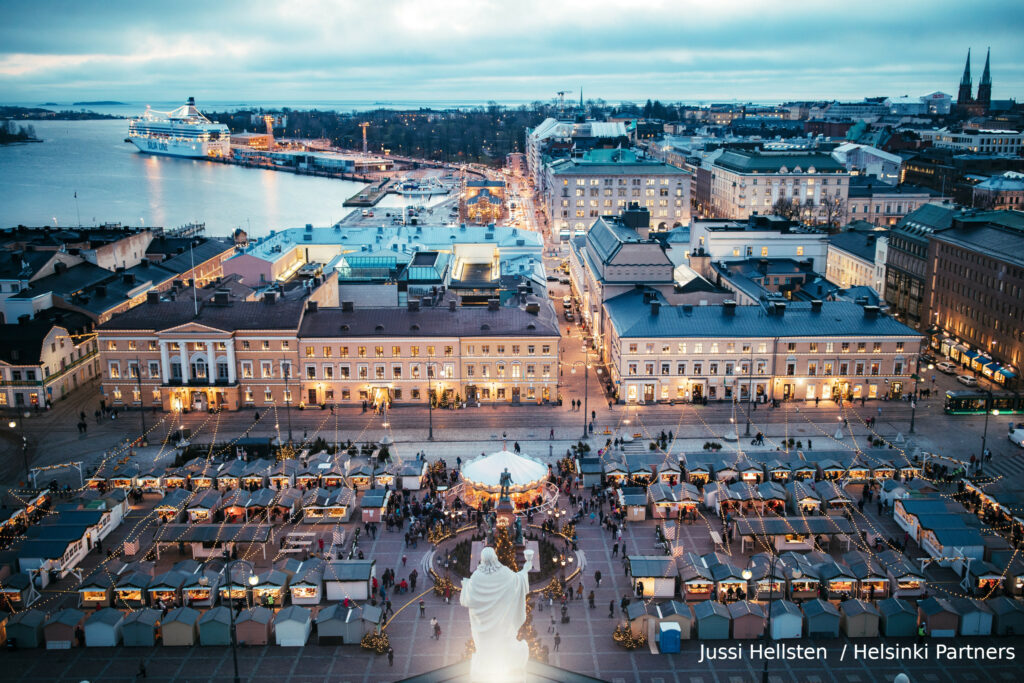Urban digital twins combine the geospatial data sets that describe the environment with real-time data sources and processes, offering an up-to-date view to the living city. 3D city models are a central building block for urban digital twins. By creating a compilation of 3D models including buildings, road infrastructure, street furniture and greenery, they create a comprehensive visual and simulative virtual model of the existing cityscape. For describing the real-time conditions and ongoing processes, IoT technologies and APIs are an equally important component for an urban digital twin. The urban digital twin becomes a networked entity, rather than a single information system or data set.
Urban digital twins support Living Lab activities in several ways: ideas can be tested, experimented with and demonstrated early with the digital twin. Data can also be collected with the twin and exported for various purposes, such as to support the development of new services. Capability for a quick and easily controllable virtual environment creates easily understandable tools for communicating plans, designs and ideas in the urban context. At the same time, living labs offer a possibility to discover actual development needs and identify technical bottlenecks present in the cities. Thus, the living labs also support the development of technology by providing real-life cases.
The urban environment can be described on a wide variety of detail levels and scopes, ranging from national maps to extremely detailed models of individual components. These are required for different applications, and may be integrated with different real-time data sources. More detailed digital twins can be produced for individual systems, areas or points of interest. The urban digital twin therefore becomes a compilation of networked, partially overlapping smaller digital twins.
Currently, there are two 3D city models of Helsinki available: a semantic city information model and a visually high-quality reality mesh model. The city information model allows users to perform a variety of analyses focusing on energy consumption, greenhouse gases or the environmental impacts of traffic, for example. The reality mesh model can be utilised in various online services or as the basis for all kinds of design projects, such as planning the exit routes and the locations of performance stages and sales stalls for city events, for example.
We listed four ways in which the urban digital twin is shaping Helsinki and the lives of its residents.
- Maintenance works, keeping the city in good condition
- Traffic flows smoothly
- New data enables new services
- City residents can get involved in the development process
Attaining these benefits also requires linking real-time data and geospatial information. Therefore, in addition to 3D city models, the development of data integration methods, APIs and standards for data description have to be developed. There are several issues in the integration of urban digital twins and IoT technologies. These include identifying the best suitable features from urban digital twins to connect with individual sensor data sources, and ways to communicate situations where the sensors only have a limited view to a larger geospatial feature. In addition, the data sources should be described in a standardized way and terminology.
The Semantic Twins developed in the IoT-NGIN project provide a structured description of the digital twins and their capabilities. They are a significant enabler for integrating the IoT data sources and providing a starting point for utilizing linked information in the urban environment. The Semantic Twin acts as an integrating element between the technological components and different digital twins by enabling semantic-level interoperability, and thus provides a common approach to IoT-application development.
References

